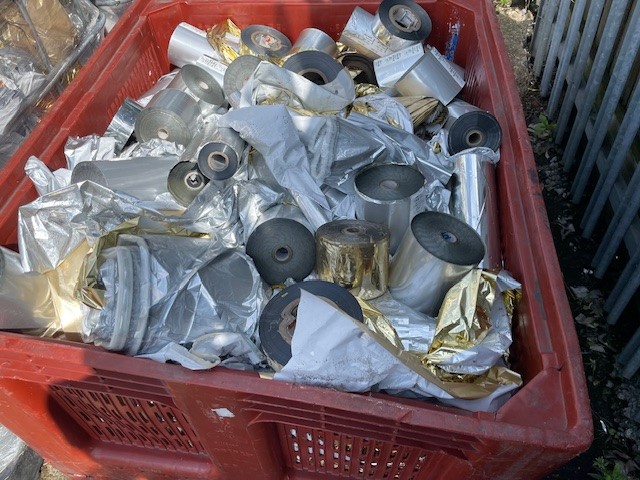There’s been a harbour at Gibraltar for 2,000 years; but today it’s never handled so little freight. Instead, it has found its own unique mix of services, as Alan Swaby learns.
If ever an estate agent was called upon to sell the Port of Gibraltar, you know for a fact it wouldn’t take long for them to start banging the ‘location, location, location’ drum. At the crossroads to just about all north/south and east/west routes, it couldn’t be better placed.
Not that anyone is sitting back and taking it easy. Within a stone’s throw there are at least two competitive ports who would like to bite into Gibraltar’s pre-eminent position.
With nothing in the way of cargo in and out, bunkering or the supply of fuel oil, replenishing stores are the main services Gibraltar Port provides to the maritime industry. But from a ship operator’s point of view, taking on fuel is a nuisance, putting a vessel out of action for a period of time. The quicker bunkers can be delivered, the better.
The fact of the matter is that until the East Side Anchorage becomes operational, the port is already limited in the number of ships it can process at any one time. As a consequence, there are build-ups; but the port is putting technology to work, giving ships advance warning so they can adjust their speeds accordingly to arrive just in time.
European ships use a monitoring system known as Safe Sea Net which keeps track of their position at all times. A portal to this system has been added which enables ships to book a slot in the queue and get a reasonably accurate time for when they will be serviced. If the port is busy, ships can slow down to a more economical speed. The operational savings go some way to compensate for the time they are in port.
All of the surveillance data the port collects is also available to ships via this link. Shipping lanes can be monitored by CCTV and radar; and the very latest weather conditions are on tap to give precise and up-to-the-minute accounts of what’s happening in the entire Gibraltar area.
There’s one additional benefit to be had. The shipping industry generates masses of paperwork that flies back and forth between port and vessel. Traditionally, this is done by fax; but using the same electronic connection, Gibraltar has broken the mould and can now accept this documentation digitally. At a stroke, multiple handling of data and the inevitable danger of mistakes being made by human input have been eliminated.
With a limited area on terra firma, expansion at the port can only happen at sea. Bunkering takes place to the west of the Rock; the East Side Anchorage, though, is equally deep and can be used by large vessels but at the moment is only utilised for replenishing stores. An environmental impact assessment is currently taking place which it is hoped will give the green light to bunkering services being extended around the headland into true Mediterranean waters. Ships would anchor to the east and bunkering would take place using tankers in the same way as at present. It is anticipated that the main investment will be in additional mitigation measures in the shape of purpose-fitted vessels capable of dealing with any form of spillage, should one occur.
After a shaky start to the year when large hikes in world fuel prices changed buying patterns from full tanks to taking on smaller parcels of bunkers—just enough to get from A to B—volumes have bounced back and are currently running at seven per cent higher than the previous year. With a US ruling next year that all ships in American waters must run on low sulphur fuel, as the last port of call for west-bound sailings, Gibraltar will be even busier and the additional capacity will be vital if ships are to be turned around quickly.
In the meantime, there is another area of expansion that needs to be addressed. Gibraltar has long been a favoured stopping off point for cruise ships: its tax-free status makes it popular with north-bound passengers wanting a last fling before going home. But there is a new trend in the cruising business which Gibraltar hopes to capitalise upon. Cruise operators are pushing the concept of hotel accommodation afloat—the nautical equivalent of a city break. Rather than committing to a voyage that may take seven to 14 days, holiday makers would get the cruising experience; but only for a short voyage of two or three days.
Gibraltar is ideally placed to cater for this sector. The finishing touches are being applied to new terminals at both the airport and the port—both no more than a 10 minute drive from each other. Holiday makers will be encouraged to fly to Gibraltar and pick up a passage on either a long or short cruise. Talks are underway with operators of smaller cruise ships of up to 500 passengers and one has already been signed up who will be offering short hops, for example to Barcelona, from where passengers can fly back home.
While customers are always demanding in their own way, the unusual mix of business at Gibraltar means that the port has to satisfy quite different expectations from both a commercial and an affluent leisure market point of view. In addition, it is always under the scrutiny of its dominant neighbour, so for a whole gamut of reasons, the Gibraltar Port Authority is keen to operate as smoothly and efficiently as possible—no spillages and no lost suitcases, while at all times minimising turnaround times.
As one observer pointed out, with so much happening at the port coupled with the real possibility of expansion around the corner, it’s important that all the new changes are bedded down to ensure that the port maintains its reputation for quality and gives customers exactly what they want. www.gibraltarport.com
DOWNLOAD
 GibralterPORTS_SEPT11_emea-bro-s.pdf
GibralterPORTS_SEPT11_emea-bro-s.pdf












